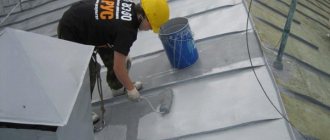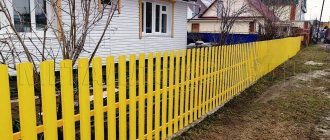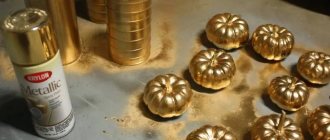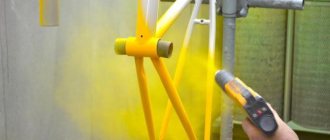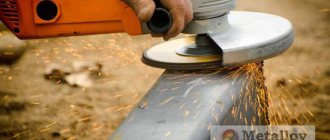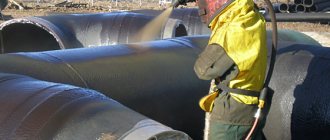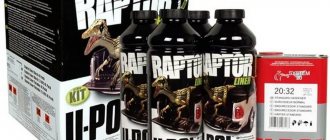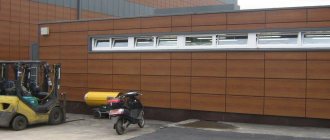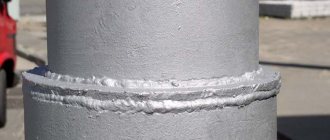What's the point?
To improve the performance properties of the metal, polymers are used that can react under certain conditions. Such coatings are dry compositions based on finely dispersed powder, to which hardeners, fillers and pigments are additionally added. It was not by chance that the polymer coating was chosen to increase the protective properties of the metal: metals conduct electric current, as a result, the charge is transferred to the product, resulting in the formation of an electrostatic field. It attracts powder particles, holding them on the surface of the workpiece. The peculiarity of the polymer coating is its high degree of resistance to any type of impact. Moreover, it is aesthetically pleasing.
Areas of application of protective polymer coatings
Currently used in almost all manufacturing industries. If at first they were used to protect small and simple metal parts, now they are used for large-sized products of complex shape: automobile bodies, pipes and rolled metal, building materials and finished structures. At the same time, the scope of operational capabilities for anti-corrosion and electrical insulation protection has significantly expanded, and anti-adhesive and anti-friction protection has been added. Polymer coatings are used in the following industries:
- Car manufacturing - mainly used to protect fittings, handrails and internal technological equipment of passenger and subway cars. Polyester and epoxy-polyester coatings are widely used. The main advantages that the processed parts received are not only anti-corrosion protection and increased wear resistance, but also simplification of the removal of complex contaminants.
- Automotive industry - polymer coating is applied to many car parts: springs, chassis, bumpers, headlight hangers, valve switches, buffers, etc., including where expensive chrome plating was previously used. Finishing is carried out mainly to improve decorative qualities and to increase the service life of parts during intensive use.
- Chemical engineering - the widespread use of polymer coatings in the chemical industry is due to their high resistance to aggressive compounds combined with mechanical strength. It is used not only to protect the internal surfaces of containers and pipelines and fittings, but in some cases also for working parts of mechanisms that are in direct contact with an aggressive chemical environment.
- Pipe production - the use of polymer coatings significantly increases the service life of pipelines; epoxy-based powder paints are used for this.
- Electrical industry and electronics - polymer coatings used in radio-electronic devices are characterized by special characteristics: - Increased electrical insulation properties; - Heat resistance and high thermal insulation coefficient;
— Low water absorption;— Lack of temperature and humidity deformation.
- Furniture industry - traditionally polyester and epoxy-polyester powder paints are used. They are used not only for coating metals, but also wood products and chipboards. Simple application technology allows us to produce products that have a high degree of protection from mechanical damage and high humidity. Much attention is paid to the decorative properties of the material - a wide color palette and variety of textures.
- Construction – one of the areas where polymer coating is the production of building materials. This mainly includes corrugated sheeting, metal tiles, cladding panels and anti-corrosion protection of fittings. The materials are subject to not only protective, but also decorative and aesthetic requirements.
How does polymerization take place?
The powder coating shop consists of several sections:
- Product preparation area: in order for the polymer coating to be applied correctly and evenly, the metal product is first thoroughly cleaned of dust, rust, and dirt. It is advisable to use effective sandblasting and phosphating. A mandatory step is degreasing the metal surface.
- Spray booths: The spray booth is where the actual painting is done. The chamber is thermal, it can heat up to a temperature of 200 degrees and warms up evenly. The powder begins to melt, due to which an even and smooth coating is formed over the entire surface of the metal, and its pores are filled.
- Polymerization of the product is carried out in a cooling chamber: here the temperature gradually drops and the polymer film becomes harder. After 24 hours, the polymer coating is ready for use.
Painting technology: what's the point?
Powder coating is applied in several stages. At the first stage, the surfaces are processed. It is very important that metal products are thoroughly cleaned of dirt and oxides, and degreasing the surface will promote improved adhesion. After preparation, the masking stage is performed, that is, those elements of the metal product that should not be exposed to the powder composition are hidden.
The parts to be processed are loaded onto a transport system and then sent to the painting booth. After spraying, a powder layer is formed on the metal. At the polymerization stage, a coating is formed, which is a melting of a layer of paint.
What are the stages of polymer metal painting technology?
Those who have at least once encountered the formation of corrosion on the surface of metal products understand the importance of high-quality painting. Many are already familiar with this type of protective coating, such as polymer powder paints. Unfortunately, not everyone knows the technology of polymer painting. The dyeing process is quite simple. It consists of three main basic stages:
- The first stage is preparing the metal for polymer painting. It includes removing dirt, degreasing the surface and phosphating, which increases adhesion and protective properties against corrosion.
- The second stage consists of applying a layer of polymer paint to the metal surface.
- The third stage involves melting the coating and polymerizing it in an oven.
After the film coating is formed, the process of cooling and curing of the polymer paint occurs.
Now let's look at each stage in more detail.
- Surface preparation
The initial stage of polymer painting of metal is the preparation and treatment of its surface. This is one of the most critical and lengthy processes, on which the quality and durability of the coating depends. Many masters pay insufficient attention to this stage, considering it insignificant. However, obtaining a smooth and even surface with a durable polymer protective layer is possible only with high-quality pre-treatment of the metal surface.
A properly prepared base is the key to a stable, elastic, reliable and durable coating. It promotes adhesion to the powder mixture and improves anti-corrosion properties.
To remove contaminants, it is important to follow the correct processing method and use a composition suitable for this purpose. The choice of means for preparing metal for polymer painting takes into account the quality and type of surface, the degree of its cleanliness and the characteristics of further operation.
Before the painting procedure, abrasive cleaning of the surface, degreasing and application of a conversion composition are carried out as a pre-treatment. Of these stages, the most important is degreasing; the rest are carried out as needed.
So, the process of preparing metal for polymer painting includes several stages:
- abrasive cleaning;
- degreasing with iron or zinc phosphates;
- wet surface cleaning and fixing;
- drying the polymer coating.
The first stage of cleaning and degreasing can be carried out mechanically (using brushes or grinding discs) or chemically (surface cleaning is carried out with alkaline, acidic or neutral substances, as well as special solvents, which are selected depending on the degree of contamination and the area of metal being treated).
The conversion layer, which is applied first, serves as a protective barrier that prevents moisture and contaminants from entering, causing paint peeling and deterioration of the coating.
Phosphating and chromate plating methods involve applying a thin layer of a substance that provides strong adhesion to the metal surface during polymer painting. Iron phosphate, zinc or chromium can act as a protective compound. Each substance is used for specific metals (iron phosphate for steel surfaces, zinc for galvanic cells, chromium for aluminum products). Polymer painting of galvanized metal provides the highest protection against negative factors.
Dear readers!
If you have any questions about development and production:
➜ housings for electronic equipment;
➜ housings for LED displays and monitors;
➜ shielding structures for electronic devices.
Call: +7(495) 642-51-25
or leave a request. We will answer all your questions! It's absolutely free!
For aluminum structures and products made from its alloys, preparation by anodizing or chromate plating is used. A surface treated with phosphates has the most reliable anti-corrosion protection, increasing the degree of adhesion several times, but this method is the most complex of those listed.
Abrasive cleaning methods before polymer painting of metals are used to remove rust, scale, oxide film and other surface formations. They are divided into mechanical, shot blasting and shot blasting.
As the final stage of the preparatory process for cleaning the metal surface before polymer painting, the passivation method is used. It involves treating the base with sodium and chromium nitrate compounds. The passivation method prevents the formation of secondary corrosion; it is used after degreasing or phosphating the base.
What are the features?
Metal treated with a polymer coating is characterized by reliability and increased strength. This is explained by the fact that a sealed monolithic film is formed, completely covering the surface of the product and firmly adhering to it. Thanks to the polymer coating, the metal has:
- high adhesion to the surface;
- high strength and wear resistance;
- long service life while maintaining original properties;
- rich color range;
- fast production cycle.
Polymer coating of metal is carried out on the basis of various materials and coloring powders. The choice of a specific substance depends on the purpose for which the coating is applied and how important the decorative properties are.
Polyester
Polyester is most often used for polymer coating of metal. This is an inexpensive material with a high level of flexibility and moldability, and it can also be used in any climatic conditions. The polyester-based polymer-coated sheet is resistant to ultraviolet radiation and corrosion. The material forms a high-quality and durable film on the surface, so that steel sheets are delivered intact under any transportation conditions.
Matte polyester is also widely used: the coating has a very small thickness, and the metal surface is matte. The peculiarity of this material is its high color fastness, good resistance to corrosion and mechanical stress.
Pural
Pural is a polyurethane-based material containing a modified polyamide, has high heat resistance and a silky-matte surface. Metal products coated with it have unique resistance even to significant temperature changes over a wide range (within 120ºС).
At the same time, sheet metal coated with pural is not subject to color change and is endowed with high chemical resistance and other valuable performance characteristics. Although this material is not as resistant to plastic deformation as plastisol, and is somewhat more expensive than polyester, today it is the most optimal coating in terms of price and quality ratio.
Galvanized metal coated with polymers is most widely used in roofing. Profiled and laid on the roof, it gives the building environmental friendliness and a beautiful appearance. And the high anti-corrosion characteristics of the coating, its resistance to ultraviolet rays and mechanical damage provide the roof with ease of installation and durability in operation.
Plastisol
Another popular polymer coating for metal is plastisol. This decorative material contains polyvinyl chloride, plasticizers; Outwardly, it attracts attention with its embossed surface. This is the most expensive coating, and at the same time the most resistant to mechanical damage due to the large thickness of the coating. On the other hand, the material does not have high temperature resistance, and therefore the coating will deteriorate when exposed to sunlight at high temperatures. Due to the large thickness, the corrosion resistance of plastisol is high.
Steel with a polymer coating based on pural, which has a silky-matte structural surface, is popular. Resistance to temperature changes and chemicals makes this composition popular for metal processing.
Painting technology
Metal painting begins with cleaning from dirt and old paint residues, as well as degreasing. For this purpose, specialized chemicals or mechanical means are used. In case of extreme degrees of contamination, sandblasting of surfaces is used, both manually and using mechanical devices.
Metal surfaces are painted with powder paint and varnish mixtures. The powder coating procedure is carried out in two stages:
1. Applying a dye to a metal surface in a spray booth.
The pre-powder paint and metal surface are given opposite electrical charges. Since the latter are mutually attracted to each other, the powder adheres tightly and evenly to the entire surface to be painted.
Particles that remain in the air are drawn in by the ventilation system and settle in storage tanks. They can be reused for painting. Therefore, painting 1 ton m2 of metal with powders is cheaper than with aerosols or liquids.
2. Heat treatment of the sprayed surface.
Under the influence of elevated temperature, powder particles sinter with each other and with the metal surface, forming a monolithic and durable layer of paint and varnish coating.
During the sintering process, the molten coloring substance penetrates the crystalline structure of the metal, so galvanized metal is painted with coloring substances. And not only to give an aesthetic appearance to the product, but also to protect the protective zinc layer from mechanical damage.
Roll packaging
- Unwinder;
- Stitching ribbons;
- Tape storage;
- Chemical surface preparation;
- Painting booths;
- Oven drying;
- Water cooling;
- Application of enamel;
- Oven drying;
- Water cooling;
- Tape storage;
- cutting;
- Roll winder.
The production of rolled galvanized steel with a protective and decorative paint coating is carried out in accordance with GOST 30246-94, R 52146-2003.
The following types of enamels are used as dyes:
- Polyester (polyester)
- Polyurethane coating
- Polyvinyl chloride (PVC) and polyvinylene difluoride (PVDF)
Polyester (polyester) is a material that perfectly balances price and good performance characteristics. Suitable for any climate zone and has fairly good mechanical properties. The coating is matte. Coating thickness - 50 microns. Heat resistance - 120°C.
Polyurethane coating is a polyurethane-based coating with a silky matte surface. The material can withstand large temperature changes (up to 120°C), is resistant to solar radiation, and has good chemical resistance and color fastness. With a thickness of 50 microns, it has excellent anti-corrosion properties.
Polyvinylidene difluoride (PVDF) is a coating based on a mixture of polyvinylidene difluoride and acrylic resin. The material is resistant to mechanical damage and has high strength and anti-corrosion properties. Retains its properties at temperatures from -60°C to +120°C. Resistant to UV radiation, highly resistant to aggressive environments and mechanical stress. Coating thickness - 27 microns.
PVDF and polyurethane coatings can be used in case of special operational requirements and have high strength and anti-corrosion properties. These coatings are valuable because they are UV-resistant and colorfast. The use of polyurethane coating is especially effective in the Russian climate; this material is not afraid of both low and high temperatures and can withstand large temperature changes. Unlike PVDF and polyurethane coating, polyester is much less resistant to mechanical damage, but has much greater flexibility and a more attractive price.
Printech is a coating with many types of patterns applied to galvanized steel sheet using the offset method. Combines an elegant appearance and excellent protective properties of the coating. This technology has already gained popularity in many countries and is produced on the basis of polyester (polyester) and polyvinylene difluoride (PVDF) coatings.
Printech coating structure
Printech coating color palette catalog
Structure of steel with polymer coating:
- Polymer coating
- Primer for enamel
- Passivated layer
- Zinc layer
- Steel sheet
- Zinc layer
- Passivated layer
- Primer for enamel
- Back paint
Metal characteristics
| GOST 52246-2004, ZINC Zn 80-275 | |
| Metal: MMK, Severstal, NLMK | |
| Thickness: 0.2-0.9 mm | |
| Width: 900-1250 mm | |
| Types of coating: PVDF, semi-urethane, polyester | |
| The entire RAL palette: more than 200 colors | |
| Roll weight: from 1.5 tons | |
Wall and roof sandwich panels, profiled decking, galvanized steel in rolls coated with PVDF (polyvinyl dente fluoride coating), polyurethane coating, polyester from standard to rare and exclusive colors.
Standard RAL colors:
Full range of RAL colors:
Characteristics of polymer-coated steel
Features of polymer-coated materials are strength, formability, and high corrosion resistance. After processing, the steel acquires a beautiful appearance, which can be given any colors and shades. Rolling is carried out in accordance with GOST, the polymer coating is of high quality. Painted rolled products can have a one- or two-layer coating; options are possible when the substance is applied on one or both sides. Thanks to the polymer coating, the performance properties of steel are improved:
- polymer-coated metal can be processed into finished products;
- the coating is distributed evenly over the surface, therefore the degree of protection is uniform;
- the absence of pores guarantees a good level of protective properties;
- steel has good adhesion;
- metal can retain its protective and decorative properties for more than 10 years.
From an economic point of view, galvanized steel with a polymer coating is more profitable: firstly, it contributes to high productivity and quality, since the cost of coating is reduced. Secondly, the buyer does not need to invest in additional steel treatment to protect its surface. Note that the anti-corrosion properties of galvanized steel, which is treated with a polymer coating, depend on the thickness of the layer. To increase the service life of steel products, they are additionally coated with two layers of polymer, which makes the protection of the metal even higher.
Advantages and disadvantages of polymer coatings
First of all, polymer coatings have very high adhesion, since they do not just cover the surface, but bind to the metal at the molecular level. The second important property is resistance to deformation, due to which the coating does not crumble and is not damaged by mechanical stress.
In addition, polymer coatings can withstand prolonged exposure to water, ultraviolet radiation, high temperatures, aggressive substances, alkalis, solvents and other chemicals. All this significantly expands the scope of application of products with polymer coatings.
Other undeniable advantages of polymer coatings include heat resistance, high strength, impermeability, electrical insulating properties, and environmental friendliness. Polymers have an aesthetic appearance and a large number of colors.
The main disadvantage of polymer coatings is their high cost. This is due to the fact that application requires a considerable amount of material and special equipment.
However, the treatment is carried out for the entire service life of the parts, eliminating the need for touch-up painting or updating the layer, so the polymer coating pays for itself very quickly.
The disadvantages of polymer coatings also include the difficulty of removing them from the surface. This is due to the high resistance of polymers to chemicals and mechanical stress, so simply erasing the coating will not work; it can only be removed using a special tool.
Coating features
Polymer coating is a film that has a whole range of unique performance characteristics. Pre-painted rolled products are created on the basis of several types of polymers. Any material processed using this method - steel sheet or polymer-coated mesh - is impact resistant, corrosion resistant and has high adhesion. It is also important that powder coating allows you to make the metal surface of any color, including artificially aged, for example, in antique style.
Today, a popular method of painting rolled steel is Coil Coating. The essence of the method is that the coating is applied on an automated line, that is, rolled sheets are processed on the line, after which the coating is applied to them using roller machines. This technology has become widespread due to the fact that there is no loss of materials, and the line itself is more productive, and therefore profitable.
As with any other finishing work, you first need to prepare the surface, after which it is painted. This technology allows for high-quality processing of steel, aluminum and tinplate. Thus, a polymer coating is an opportunity to improve the performance properties of the metal, increase its protective properties and ensure long service life.
Methods of applying polymer coatings
The following basic technological principles for producing metal plastics have been developed and implemented:
- application of plastisols and plasticized organosols to a metal base;
- cladding of metal previously coated with an adhesive sublayer with a polymer film;
- cladding the metal with a polymer film, which contains components that ensure a strong and durable bond between the coating and the substrate;
- application of plastisols and plasticized organosols to a metal base;
The technological scheme of the sheet steel and aluminum coating process includes the following main groups of operations:
- strip surface preparation;
- application, polymer coatings and coating surface finishing.
Roller machines are used to apply coatings such as plastisols and organosols (Fig. 6.7). The applied material, located in the groove between two metering rollers 3, 4, is captured and transferred directly to the forming roller 2. The gap between the metering roller and the forming roller determines the thickness of the coating layer of the metal tape 1.
Figure 6.7 - Diagram of a roller coating machine : 1 - metal strip; 2 - application roller; 3 - metering rollers; 4 - support roller
Roller machines provide a high speed coating process (up to 90 m/min) and are used for continuous processing of strips and rolls. These machines include multiple roller units; allow you to switch to forming coatings of different types, different thicknesses, and also cover both sides of the metal without stopping the entire machine. Rolling machines are usually placed in separate insulated boxes, where increased air pressure (0.7 MPa) is created.
After plastisol is applied to the strip, it enters drying ovens where the solvent is removed. Drying time, depending on the material and thickness of the coating, and the speed of the belt, is 0.5 to 2 minutes.
Metal cladding with a polymer film is carried out according to the following technological scheme: feeding (unwinding from a roll) of metal, preparing the metal surface, applying an underlayer (primer) on one or both sides, applying the main (finishing) layer of coating, drying, winding into rolls.
Preliminary surface preparation may include brushing, chemical or electrolytic degreasing, etching, and washing.
However, pre-treatment of metal surfaces may not be sufficient to ensure reliable adhesion of thermoplastics. It is also necessary to apply a layer of primer, which uses copolymers of thermoplastic and thermosetting resins. The thermosetting part of the copolymer adheres well to the metal, and the thermoplastic part moves along the surface and combines well with the applied thermosetting coating. The thickness of the soil layer depends on the composition and can vary from 50 microns to 0.3 mm. The layout of the coating installation is shown in Figure 6.8.
Figure 6.8 – Installation diagram for coating : 1 - coating roller; 2 — container with soil; 3 - auxiliary roll; 4 - tension roller; 5 - device for coating the bottom side of the strip
The metal after priming has a temperature of 160 ºС, while the film can also be heated to 40-50 ºС. The film is applied with two rubber-coated rollers (Fig. 6.9). The application speed can be from 6 to 30 m/min.
Figure 6.9 - Layout of rollers for covering metal strips with polymer films : a - without tension rollers; b- with tension rollers; c - with tension and lower support roller; 1 - tape; 2 — unwinder with a roll of film; 3 - rolling roll; 4 - support roller; 5 - tension roller; 6 - intermediate roller; 7 - upper support roller
The application of powder polymers to the surface of metallic materials can be carried out in various ways, the main of which is electrostatic.
The essence of the electrostatic spraying method is that charged polymer particles, under the influence of electric field forces, move towards the product and are deposited on its surface. A high voltage field is created between the sprayed product and the sprayer, in which the polymer particles are electrified.
Charged particles form a cloud, which is deposited on the surface of the product. Depending on the voltage and air pressure, the particles have different degrees of penetration into the recesses of the product and different dissipation abilities. The powder that has not settled on the product is captured by a regenerating device and used again.
Powder polymers, varnishes, emulsions, resins, fluoroplastic, etc. are applied using electrostatic spraying. In Figure 6.10
A diagram of the installation for spraying polyethylene onto the surface of a steel strip is shown.
The first stage of the process is the preparation of the surface of the tape, which consists of washing and etching. After this, the tape enters the induction preheating chamber. The heated belt is fed into an ionization chamber, in which special atomizers apply the powder to a continuous moving belt. Next, the strip is fed into horizontally located inductors for melting, at the exit of which it is cooled by air nozzles and wound into a roll.
Figure 6.10 — Installation diagram for producing polymer coatings by electrostatic spraying : 1 — strip winding system into a roll; 2 — air nozzles; 3, 8 - inductors; 4 - bunker; 5 - dispenser; 6 - sprayer; 7 - ionization chamber; 9.14 - hot water rinsing baths; 10,12 — jet washing baths; 11 — chrome plating baths; 13 — pickling bath; 15 — degreasing bath

